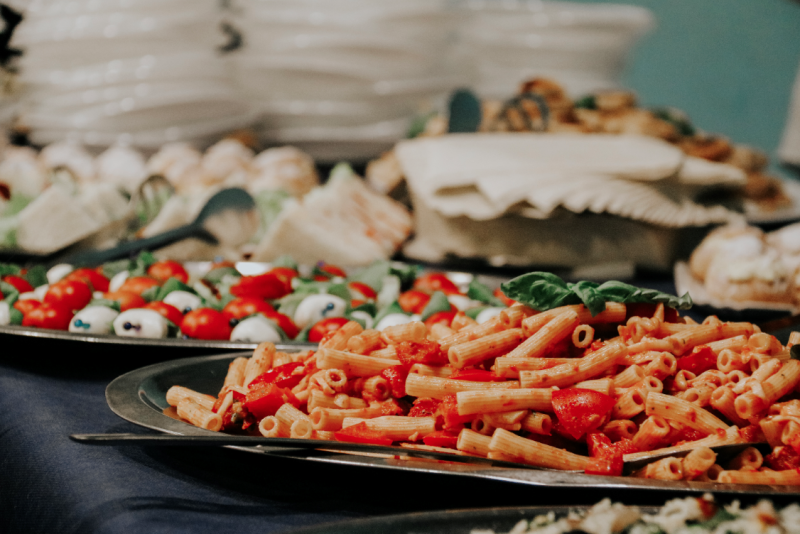

It's always exciting when you travel to a new place. You get to observe your host culture and notice how people do everyday things differently. When you study abroad at John Cabot University, Rome is your campus, and Italy is your home. And as a JCU-er, you won't have to look far to learn about the customs and habits of your host culture. In Italy, a lot of these important cultural norms happen right at the dinner table.
Here are 5 important table manners to remember in Italy
1. Don't mix your courses
In Italy, the taste of every flavor in the meal is extremely important. Certain sauces can be paired only with certain pastas, and many ingredients depend on the season or the region. When you go out for a meal with Italians, you will most likely have multiple courses, and it's important to take your time with each course--separately. It is not common to serve different foods on one plate (pasta, salad, meat, etc.). Instead you will have a salad or vegetable course, pasta course, and meat all served separately.
2. Never rush through a meal
Along with the importance of ingredients comes the importance of time. A proper meal in Italy should never be rushed. When scheduling a dinner with friends, you should definitely plan to be sitting for more than an hour. Service at Italian restaurants is fairly slow when compared to certain other countries, and you will never be disturbed or asked by the server to leave. Often you will have to catch the server's attention to ask for the bill. An Italian dinner is not a quick meal. It is an art with different flavors, specialties, and courses--all that should be appreciated and given the appropriate time and attention.
3. Only drink water or wine at dinner
Back home you might be used to drinking any type of beverage with dinner (soda, milk, juice, etc.), but in Italy, you will quickly learn that it is customary to only drink water or wine at dinner. At an Italian family meal, you will usually see a bottle of wine on the table along with either still or sparkling water. Other beverages are typically reserved for aperitivo, or appetizers, and you will most likely be served a coffee or digestivo after your meal. But, during the meal, stick to wine and water.
4. There is no need to over-tip
Tipping in Italy varies depending on the place. You might be used to leaving a generous 15-20% tip where you are from, but in Italy, that is seen to be excessive. After an Italian meal, it is customary to just round up the bill or leave a few Euros. Most sit-down restaurants include a service charge or table fee (which includes the cost of your place setting, table-cloth, and utensils), so you don't need to spend too much extra on a large tip. Being generous is definitely not a bad thing, but it is uncommon to over-tip.
5. Don't cut your pasta
After spending any time at all in Italy, you will quickly realize that are so many different types of pasta: different shapes, sizes, and flavors. What you may not know is that each pasta is made to go specifically with a certain type of sauce. The shape of the pasta determines what ingredients, sauces, and toppings will go in that dish. If your pasta is long, it is long for a reason, so you definitely shouldn't cut it!




